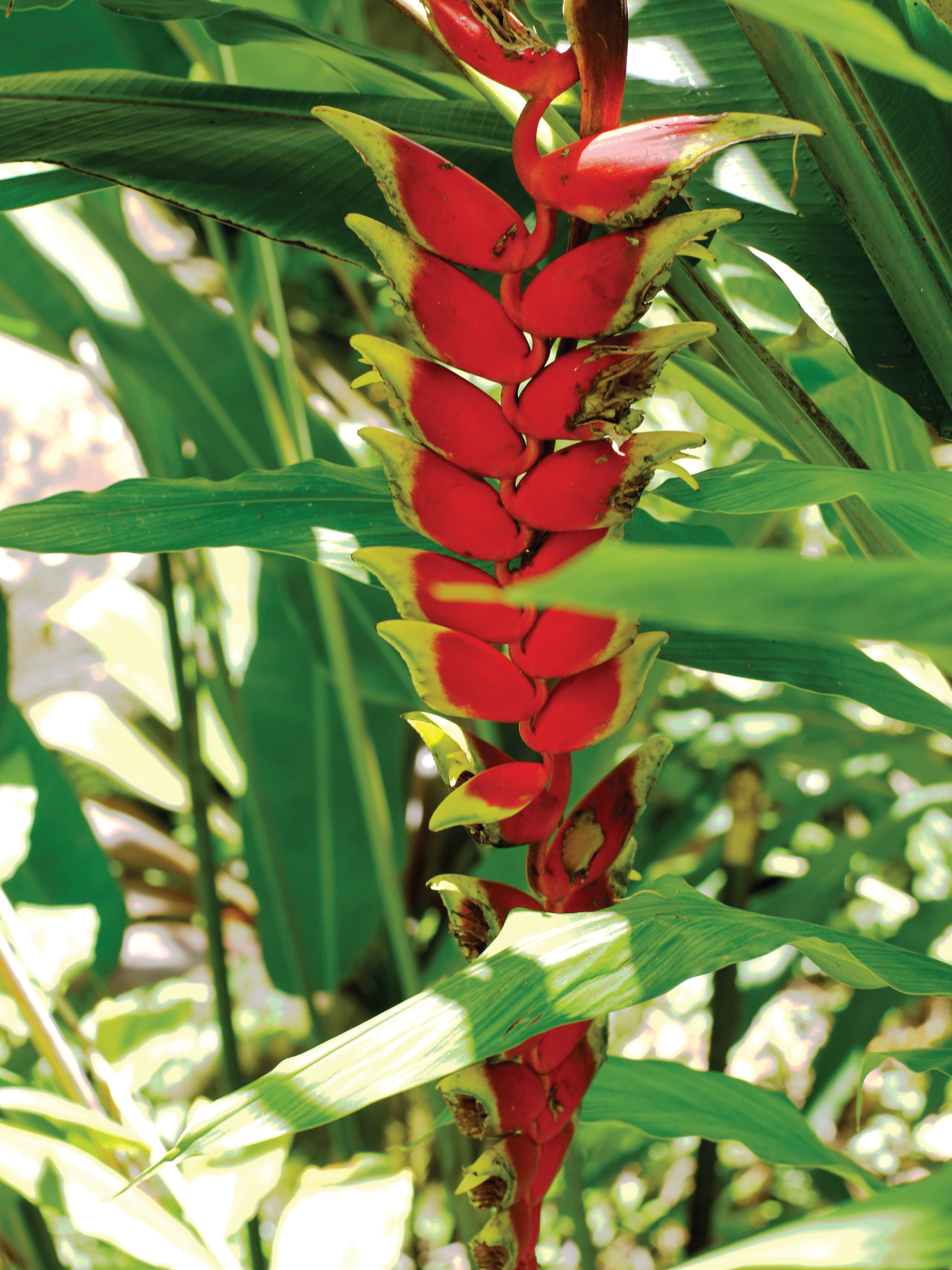

Dig down a bit and you’ll find ginger-like rhizomes just below the surface.

You can tell galangal is related to ginger by its tall stems and flag-like green leaves. It is often included in seafood dishes as it balances out ‘fishy’ flavours. Galangal is an essential ingredient of most curry pastes including Malaysian asam laksa, Cambodian samlor kor ko soup and various Indonesian dishes such as spicy beef rendang. It is one of the key ingredients, along with other spices and herbs, in Tom Yum soup (my absolute personal favourite) which features the wonderful sweet, sour, salty, spicy combination of mukrat (kaffir) lime, lime juice, chilli, lemongrass and fish sauce. More often it plays a subtle role, complementing rather than dominating the flavour. In some Thai dishes, galangal is the star performer as in tom kha gai (see page 71) which translates as boiled galangal with chicken. It’s used with great relish in Thai cuisine, almost to the exclusion of ginger, and is sometimes known as Thai or Siamese ginger. What she is describing is the flavour of greater galangal (called kha in Thai), one of four types of galangal. Think mustard rather than ginger, with a shade of lemon, a trace of pine needles and hints of tropical fruits. Our Singaporean friend and avid cook Lilian Loh describes it as a ‘clean, peppery bite with pungent spiciness.’ However, the flavour is more complex than ginger. Then you’ll feel ‘the burn’, more powerful than ginger. Put a sliver of galangal in your mouth – if you dare – and you’ll experience a curious, sharp, sweet taste on the tongue.


 0 kommentar(er)
0 kommentar(er)
